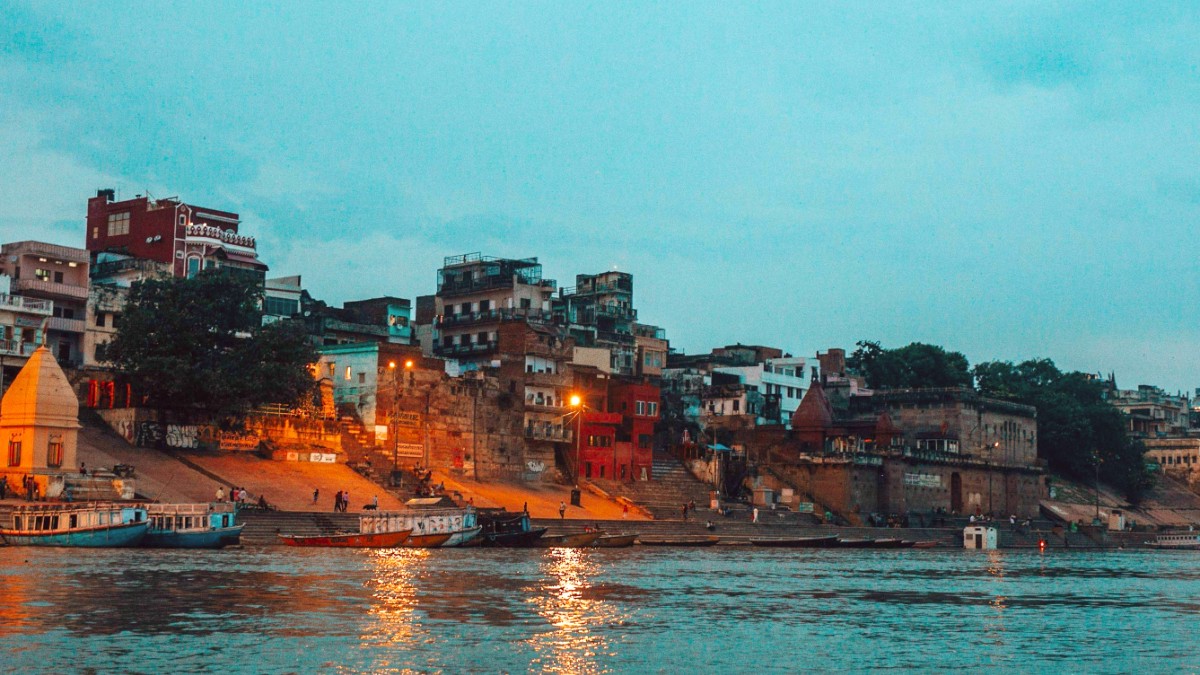
Uttar Pradesh, India
The heart of Varanasi lies along its more than 80 ghats, the stone steps leading down to the sacred Ganges River. These ghats are bustling centers of religious activity, daily life, and profound human experiences.
The Kashi Vishwanath Temple, dedicated to Lord Shiva, is one of the twelve Jyotirlingas, making it a powerful pilgrimage destination. The current temple structure was built in 1780.
Sarnath offers a peaceful contrast to Varanasi's bustle.
Living historical monuments, each with unique history, rituals, and architecture.
Narrow lanes (galis) form a sprawling historical district, reflecting various periods and influences.
Beyond Kashi Vishwanath, countless temples dot the city, from grand structures to small shrines.
Smaller monuments and memorials commemorate historical figures, events, or spiritual teachers.
An 18th-century fort, ancestral home of the Maharaja of Kashi, houses a museum. Best visited by boat for city views.
Varanasi's natural appeal centers around its sacred river.
The Ganges is more than a river; it is a goddess, Ganga, the spiritual lifeline of Varanasi.
A boat ride, especially at sunrise or sunset, gives the best perspective of the city's spiritual life.
Observe diverse activities on the ghats, from rituals to ceremonies, against the ancient city backdrop.
Witness the city awakening as devotees perform morning rituals in the holy waters.
See the ghats glow with lamps as the evening Ganga Aarti ceremony begins.
The undeveloped eastern bank provides a stark natural contrast to the bustling western bank.
Located on Panchganga Ghat, built by Emperor Aurangzeb. Offers panoramic views of the Ganges and ghats.
On Lalita Ghat, an unique wooden temple built by the King of Nepal. Features intricate Nepali-style wood carvings.
Traditional wrestling arenas for pehlwans.
A unique temple dedicated to Mother India, located within the Mahatma Gandhi Kashi Vidyapith university campus. It does not contain traditional deities.
Varanasi rewards those who venture beyond the most obvious attractions. These "hidden gems" bring unique perspectives and quieter moments.
Ramnagar Fort, on the eastern bank of the Ganges, dates to the 18th century and is the ancestral home of the Maharaja of Kashi. It houses a museum (Saraswati Bhawan).
The fort is built in a Mughal style with cream-colored Chunar sandstone. It offers a glimpse into royal history.
The fort is typically open daily from around 10:00 AM to 5:00 PM. An entry fee applies.
A modern temple built entirely in white marble, dedicated to Lord Rama.
Dedicated to Goddess Durga, known for its distinctive red color and Bengali style of architecture.
Varanasi rewards those who venture beyond the most obvious attractions. These "hidden gems" bring unique perspectives and quieter moments.
Located on Panchganga Ghat, built by the Mughal emperor Aurangzeb. Offers excellent panoramic views of the Ganges River and surrounding ghats.
Situated on Lalita Ghat, an unique wooden temple built by the King of Nepal. Known for its intricate Nepali-style architecture and beautiful wood carvings.
Traditional training centers for pehlwans (wrestlers). Visiting an akhada in the mornings gives a glimpse into an ancient Indian martial art.
A unique temple dedicated to Mother India, featuring a large, detailed marble relief map of undivided India. No traditional deities.
An 18th-century fort, ancestral home of the Maharaja of Kashi, on the eastern bank of the Ganges. Houses a museum.
A modern temple in white marble, dedicated to Lord Rama, its walls feature verses from the Ramcharitmanas.
Known for its distinctive red color and Bengali style. Be cautious around the numerous monkeys in the area.
The narrow lanes of the old city are a living historical district, with architecture reflecting various periods and influences.
Each ghat holds its own history, patron, and unique set of rituals or stories. Centuries of religious practices and architectural evolution are on display.
The Sarnath Archaeological Museum is a collection of Buddhist artifacts, including sculptures, and the famous Ashokan Lion Capital, India's national emblem.
Plan visits to the ghats for both sunrise and sunset. This allows experiencing the different rhythms and ceremonies of the city.
Witness the peaceful awakening in the morning and the spiritual energy in the evening.
Varanasi's main natural appeal centers around its sacred river, the Ganges.
More than a river; it is a goddess, Ganga, the spiritual lifeline of Varanasi. A boat ride offers the best perspective of the city's spiritual life.
From a boat on the Ganges, panoramic vistas of the ghats and the city skyline are on display. Observe diverse activities unfolding on its banks.
The eastern bank of the river, undeveloped due to religious reasons, provides a stark natural contrast to the bustling western bank.
Witness the city awakening during a sunrise boat ride. Devotees perform morning rituals.
Book a Sunrise Boat TourExperience the sunset boat ride as the ghats glow with lamps and the Ganga Aarti begins.
Find Evening ToursHire a local guide in Sarnath for insights into its history and significance.
Explore Guided ToursFor Kashi Vishwanath Temple, dress modestly and be prepared for high security. Leave electronics at your hotel.
Photography is strictly prohibited at Manikarnika Ghat. Respect the sanctity of the cremation rituals.
Varanasi's museums offer insights into its rich artistic, historical, and spiritual heritage.
The ghats are not just points of access to the river; they are living historical monuments. Each ghat has its own story.
When navigating the old city's narrow lanes, be mindful of uneven paths, steps, and occasional animal traffic (cows, dogs).
Wear comfortable shoes for extensive walking.